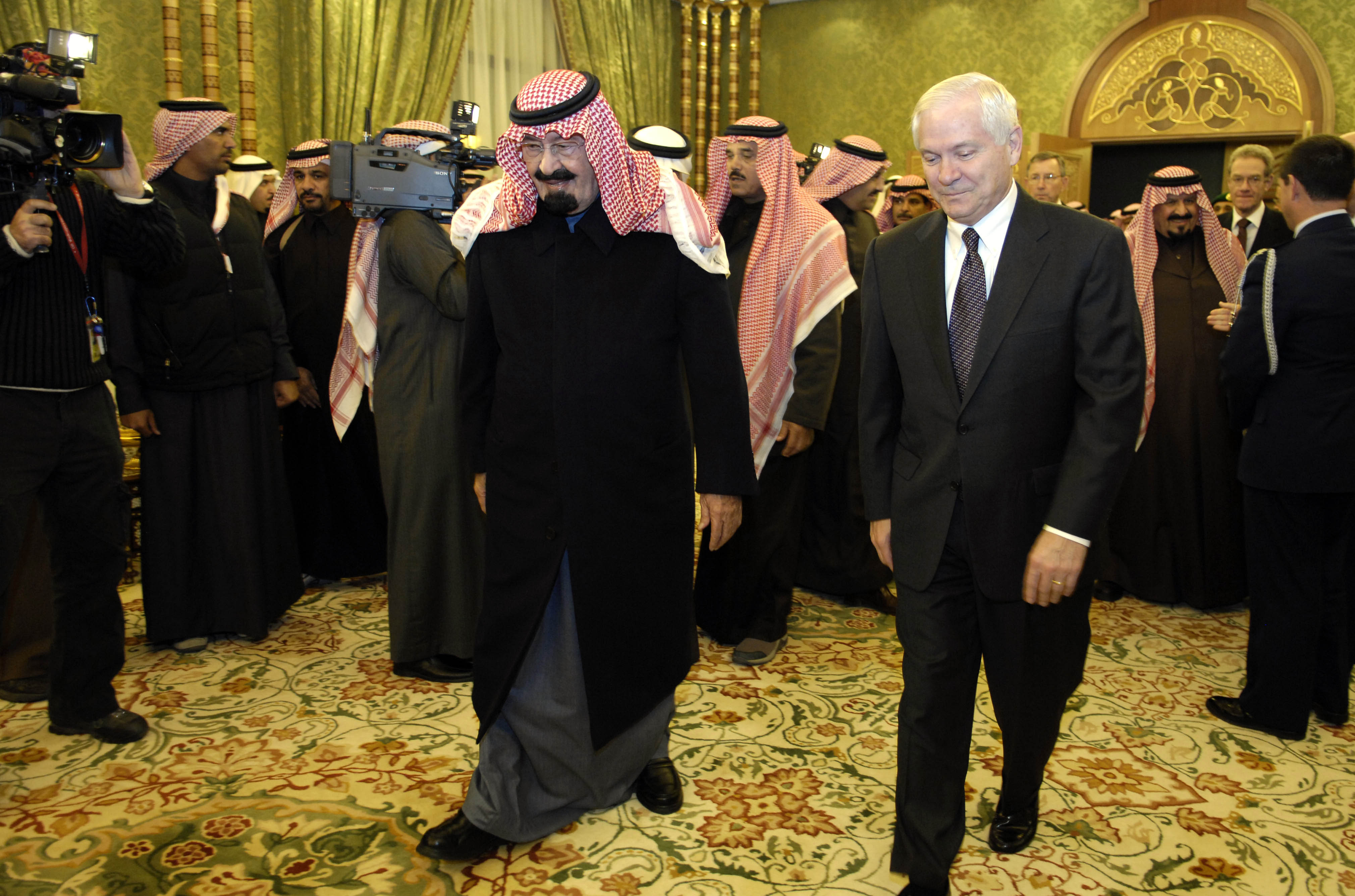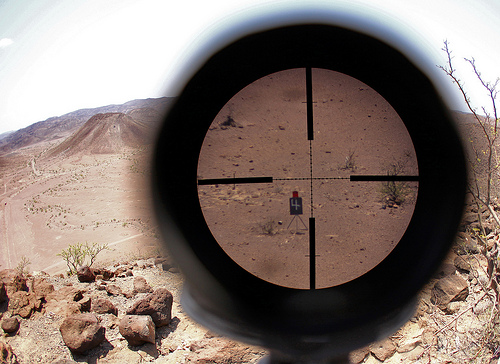
This is the first in a three-part series that will examine the historical foundations, current dynamics, and future prospects of the relationship between Iran and Saudi Arabia in light of the recent allegations that the Iranian government attempted to assassinate a Saudi diplomat in the United States.
This October, the attention of the world became focused on one of the most volatile yet least talked about relationships in international affairs, that between Iran and Saudi Arabia. On October 11, Attorney General Eric Holder and FBI Director Robert Mueller announced federal charges “against two people who allegedly attempted to carry out a deadly plot directed by factions of the Iranian government to assassinate a foreign ambassador here in the United States.”[i] News of the alleged plot, hatched by Iranian-born Manssor Arbabsiar and directed at Adel al-Jubeir, the Saudi Arabian ambassador to the United States, has inflamed once dormant tensions between the two states.
Had the US government failed to prevent the planned attack from taking place, it is almost certain the international community would have seen just how quickly Iran and Saudi Arabia could turn an ideological cold war into full-scale military conflict.[ii] The two countries’ geographic proximity to one another and complete devotion to political Islam are just two of the many factors that have instead torn these states apart. These two large and influential states are locked in a historic disagreement over their respective regional roles, and have diverged further over how best to engage the West, especially given both countries’ vast oil reserves. As a result, relations between Iran and Saudi Arabia have fluctuated from moderated tension to critically high-conflict situations. Examining the foundations of this seemingly intractable conflict offers a unique historical paradigm that can be used to better inform policy makers and academics as to the causes of existing tensions, thus providing them with the necessary foundational knowledge required to bring about a long-term, diplomatic solution.
Tracing back the sources of contemporary hostilities between Saudi Arabia and Iran, two factors stand out above the rest as fueling and exacerbating this divide; first, the sectarian split between Shiite and Sunni Muslims and second, the century-old geopolitical struggle for influence in the Persian Gulf region. Longstanding disagreements between Iran and Saudi Arabia have now branched off to form the primary differences that polarize and divide not only the two countries, but their regional neighbors as well.[iii]
At its most fundamental level, what separates Iran and Saudi Arabia is a deeply-rooted religious dispute over the rightful successor of the prophet Mohammed, and therefore over leadership in the Islamic world.[iv] Adherents of Shia Islam believe that leadership was to be kept a hereditary procedure which contrasts with the Sunni belief that local community elites should elect future leaders. Although historic disputes and wars between the two sects have occurred for centuries, the 1801 destruction of Karbala, the second holiest city in Sh’ia Islam, by Muhammad Ibn Saud, the head of the first Saudi State, is traceable as one of the first examples of Shiite-Sunni armed conflict in modern history.[v][vi] The Persian impulse for regional hegemony, originating from its historic years of empire, has led many conservative Arabs to be skeptical of their Shia neighbors.
Saudis especially believe that Iran continues to seek regional control while subordinating those states that surround it.[vii] Today, Saudi Arabia sees these imperial ambitions manifested in Iran’s increasing internal radicalism, deteriorating relations with the West, and development of nuclear capacities. Furthermore, Iran’s sphere of influence is not limited insofar as its borders permit and extends to Hamas in Gaza, Hezbollah in Lebanon, and Bashar al-Assad in Syria with the country seeking to impose a “crescent” of influence on the region.[viii] Senior clerics in Iran have virulently criticized the Saudi royal family as well, judging Saudi possession of two crucial Islamic cities, Mecca and Medina, as corrupt, and their monarchial authority as illegitimate.
Issues that have produced distasteful bilateral relations between Iran and Saudi Arabia throughout history have markedly impacted the course of the twentieth century. As a result of these relations, political discourse and development in the Persian Gulf region has changed dramatically and these changes have impacted the countries’ interactions with the international community. The global transformation from colonial monarchies toward more numerous and widespread democracies faced resistance in both Iran and Saudi Arabia. Over time, this resulted in the traditional hereditary monarchy of Saudi Arabia and the anti-western Islamic Republic of Iran. Caused largely by both powerhouses avoiding substantial colonial rule, state development occurred very differently in comparison to other emerging post-colonial states. During the 1920s, both nations were making momentous progress in nation-building, and their constructive coexistence resulted in a 1929 treaty that formally symbolized their friendship.
It was not until late in the 1940s following the creation of Israel that Iran and Saudi Arabia first drifted apart. This was spurred by Muhammad Reza Shah, the Iranian king and son of the British imposed Reza Shah upon granting de facto recognition to Israel and establishing close military ties with the new state. Saudi Arabia gawked in disbelief. During the Arab-Israeli War of 1948, Saudi Arabia joined with Egypt, Lebanon, Syria, Iraq, and Yemen to fight and crush the newly independent Israel. As a result of the disputes over recognition of Israel, the Saudis would not open themselves up to diplomatic discussions with Iran until 1966 when King Faisal al-Saud and Muhammad Reza Shah visited one another officially to handle disputes concerning controversial island possession in the Gulf.
Though largely symbolic, these meetings demonstrated a newly adopted responsibility to peace and security by the two regional powers.[ix] The years between 1968, when the British officially left the region, and 1979, the year of the Iranian Revolution, stand as the best period of relations between the two countries. At the time, both stood against communism in the Cold War fight against anti-authoritarian religious radicals. However, the Iranian Revolution changed this alignment as it resulted in the overthrow of the Shah and his regime and resulted in the establishment of a constitutional theocracy in Iran. When Ayatollah Ruhollah Khomeini emerged as the Supreme Leader of Iran, immediate criticism was voiced by a fearful Saudi Arabia concerned over its imposing neighbor’s military dominance and modernization. The Shah’s massive investment in Iranian military capabilities transformed its army from sub-par to regional superpower status, therefore providing Saudi Arabia with ample justification for its fears.
Manssor Arbabsiar’s attempt to assassinate the Saudi Arabian ambassador to the United States adds just another chapter in the long book of antagonistic history between Saudi Arabia and Iran. Whether the two cultures clash over ethnic tensions, the sectarian split between Shiites and Sunnis, or geographical territorialism, history shows that very rarely will a resolved situation arise that is a fundamental improvement from past tension.
[i] Holder, Eric. . “FULL TRANSCRIPT: Iran-Tied Terror Plot Press Conference.” Fox News, Last modified October 11, 2011. . Accessed November 2, 2011. . http://foxnewsinsider.com/2011/10/11/full-transcript-iran-tied-terror-plot-press-conference/.
[ii] Rubin, Michael. . “Iran and Saudi Arabia’s ‘hate-hate’ relationship.” CNN, Last modified October 11, 2011. . Accessed October 24, 2011. . http://security.blogs.cnn.com/2011/10/11/iran-and-saudi-arabias-hate-hate-relationship/.
[iii] “The World Factbook.” CIA, Accessed October 24, 2011. . https://www.cia.gov/library/publications/the-world-factbook/fields/2122.html.
[iv] Shuster, Mike. . “The Origins of the Shia-Sunni Split.”NPR.org, Last modified February 12, 2007. . Accessed November 2, 2011. . http://www.npr.org/templates/story/story.php?storyId=7332087.
[v] “Karbala and Najaf: Shia holy cities.” BBC News, Last modified April 20, 2003. . Accessed November 5, 2011. . http://news.bbc.co.uk/2/hi/middle_east/2881835.stm.
[vi]”Karbala.” Columbia Electronic Encyclopedia, 6th Edition (October 2011): 1. . Academic Search Premier, EBSCOhost (accessed October 26, 2011).
[vii] Whitlock, Craig, and Liz Sly. . The Washington Post, Accessed October 24, 2011. . http://www.washingtonpost.com/world/national-security/for-iran-and-saudi-arabia-simmering-feud-is-rooted-in-history/2011/10/11/gIQAhYugdL_story_1.html.
[viii] Slapman, Michael. . “Iran grasps at regional dominance.”The New York Times, February 3, 2006. . Accessed November 2, 2011. . http://www.nytimes.com/2006/02/03/world/africa/03iht-tehran.html?pagewanted=all.
[ix] Saba, Michael P. . “Saudi Arabia and Iran: A relationship in perspective.” Arab News, November 18, 1993.


